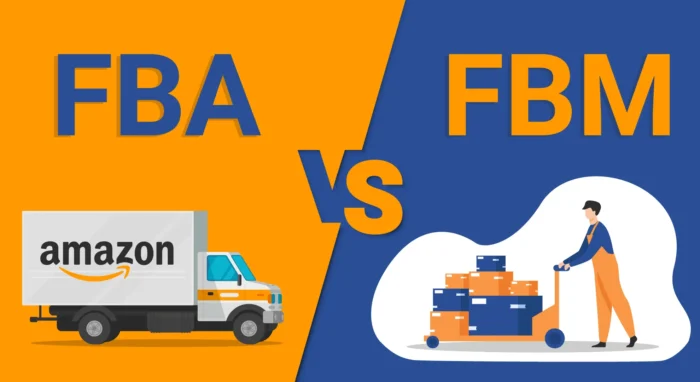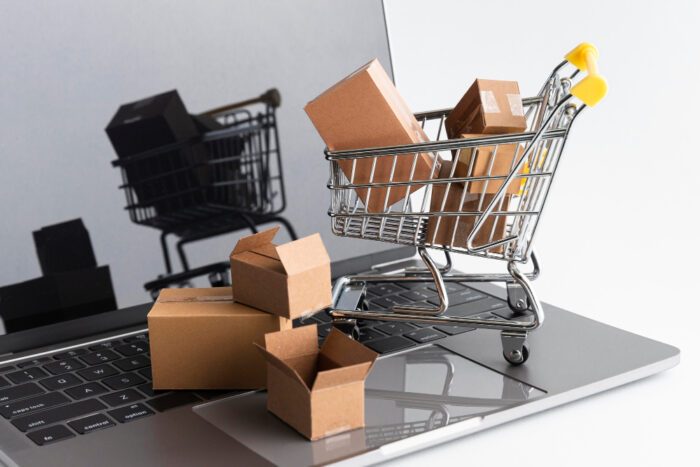
Are you among the 9.7 million independent Amazon sellers worldwide benefiting from being their own boss and running their own online shop? Or, perhaps you’re new to selling on the Amazon marketplace and have questions about how to establish a profitable online store using Amazon’s platform. In either case, you need to know about the nuances between FBA (fulfillment by Amazon) and FBM (fulfillment by merchant). Why? Because choosing between one or the other could make a big difference in your online shop’s success.
Differences Between FBA and FBM – In Plain Terms
Simply put, FBA is when Amazon ships products to your customers once they place an order from your online Amazon store. Alternatively, FBM is when you (the merchant) ship your own orders after customers buy from your Amazon store. Simple enough, right? But which is the best option for your unique business structure? Let’s find out and explore how choosing FBA vs FBM can influence the outcomes of your online triumph.

Is FBA the Way? Exploring Pros and Cons of Fulfillment by Amazon
Letting Amazon do all the heavy lifting in terms of shipping can be a godsend – especially if you’re new to the online seller game. As you can imagine, keeping track of inventory, taking care of packaging, shipping, and setting up tracking for deliveries can be a harrowing task. Not to mention upholding proper customer service for returns, which can be an incredible hassle. So, the streamlined fulfillment process FBA offers is definitely a bonus and worth hard consideration.
Another hefty benefit of FBA is that your items are in the face of 200+ million Amazon Prime shoppers worldwide. So, if a shopper searches for your offerings, your items will potentially show up in the search results. This can result in more opportunities to sell as well as gain and retain customers.
Now for the bad news. FBA can come with a steep cost. You didn’t think they would fulfill and ship your orders for free, did you? There are multiple different fees involved with FBA, including storage fees and order processing costs. Charges are also tacked on according to parcel weight and size. Over time, Amazon has increased its FBA fees, and at the time of this writing, they take an average of 40% in fees for each package they ship for you as an FBA seller.
What About FBM? Weighing the Pluses and Minuses of Fulfillment by Merchant
The clear advantage of FBM is that you’re avoiding all those profit-sucking fees we mentioned that go along with the FBA option. As you are taking care of all the inventory, order fulfillment, shipping, returns, and tracking – all that cost is on you, the merchant. This could save you money if you find less expensive ways to fulfill orders. It also gives you more control over the fulfillment experience.
Speaking of control, FBM also frees you up to manage your own inventory in-house. It also allows you to brand your packaging your own way. That means instead of your items being delivered in Amazon packaging (as with FBA), you can ship items with your own customized and branded packaging, as well as include your logo or personalized “thank you” notes in your shipments.
Then again, shipping out orders yourself means you have to have a place to store all your inventory. This can be a real challenge if you have special items that need special storage conditions (like perishable items) or if you have large items that need a lot of room for storage.
You should also know that as an FBM seller, you will not be qualified to have access to Amazon Prime shoppers. This could result in lackluster awareness about your Amazon offerings, plus dealing with a more narrow customer base on the Amazon marketplace.

Customer Service Considerations
The choice between Fulfillment by Amazon (FBA) and Fulfillment by Merchant (FBM) significantly impacts customer service dynamics. With FBA, Amazon handles customer service and returns, offering a uniform experience that customers trust. However, this can sometimes detach sellers from direct customer interactions. Conversely, FBM allows sellers to manage customer service directly, offering a personalized touch and potentially building stronger relationships with buyers. Excellent customer service is crucial in both models for establishing trust and loyalty, necessitating a proactive approach to customer inquiries and issues to enhance satisfaction and repeat business.
Flexibility and Scalability
Switching between FBA and FBM offers strategic flexibility to adapt to changing business needs, market conditions, and seasonal demand fluctuations. FBA might suit sellers looking for hands-off fulfillment and scalability, especially during peak seasons, while FBM offers more control over inventory and direct customer engagement. Sellers can leverage the strengths of each model to support different aspects of their business models and growth strategies. Effective scaling involves understanding the logistical and financial implications of each option, ensuring that operations remain efficient and responsive to market demands.

International Expansion Opportunities
Both FBA and FBM provide pathways to international markets, but with distinct considerations. FBA simplifies the process through Amazon’s global fulfillment network, offering easier access to international customers but at the cost of higher fees and compliance with Amazon’s international policies. FBM gives sellers more control over international sales and shipping strategies but requires them to navigate complex logistics, customs, and tax regulations independently. Sellers aiming for global expansion should weigh these benefits and challenges, selecting the fulfillment method that aligns with their international sales strategy and operational capabilities.
Risk Management and Contingency Planning
Effective risk management is essential for sellers, regardless of the fulfillment method chosen. FBA users face risks like inventory mismanagement, long-term storage fees, and reliance on Amazon’s fulfillment processes, while FBM sellers might encounter shipping delays, higher operational demands, and customer service challenges. Developing a comprehensive contingency plan, including diversified logistics partners and robust customer service protocols, can help mitigate these risks. Regularly reviewing and adjusting these plans ensures resilience and business continuity amid unforeseen challenges.
Long-Term Sustainability and Profitability
Evaluating the long-term sustainability and profitability of FBA versus FBM involves analyzing fee structures, operational overhead, and profit margins. FBA can offer convenience and potentially higher sales volumes but comes with significant fees and competition. FBM might have lower upfront costs but requires more hands-on management and can have higher variable costs. Sellers should continuously assess their fulfillment strategy’s financial impact, considering factors like inventory turnover, shipping costs, and customer acquisition expenses. Strategic adjustments and optimizations in operations, pricing, and customer service can enhance profitability and ensure the long-term success of the business.

Final Analysis: Which Amazon Fulfillment Service Is Best for You?
Selecting the right fulfillment service depends on key considerations such as your products, needs, storage capabilities, time consumption, and what you’re willing to pay. If you have your own products, plenty of time, and a space to store your inventory, FBM could be your ticket. Alternatively, if you’re new to selling on Amazon, don’t want to hassle with the fulfillment side of the business, and/or can budget sales to accommodate the fees – FBA might be your winner. Ultimately, the choice is yours.











